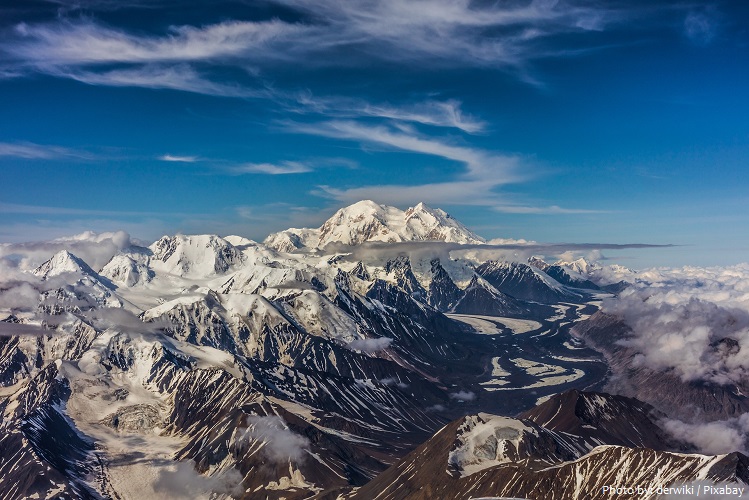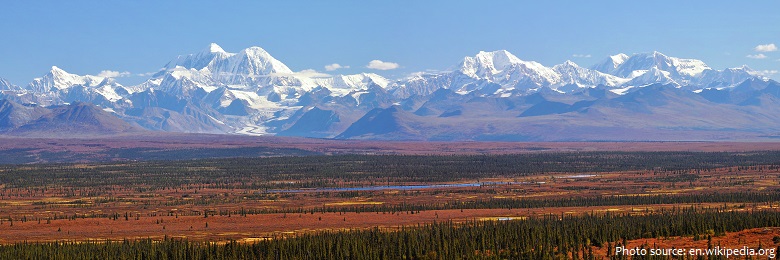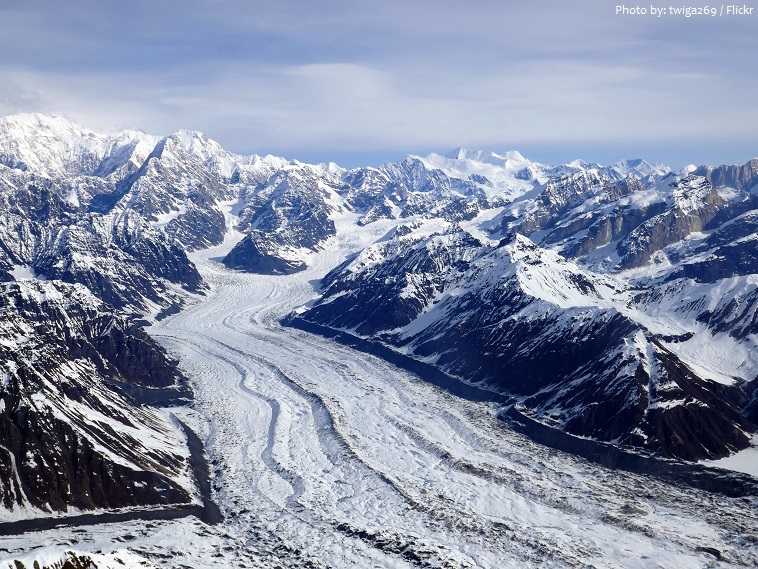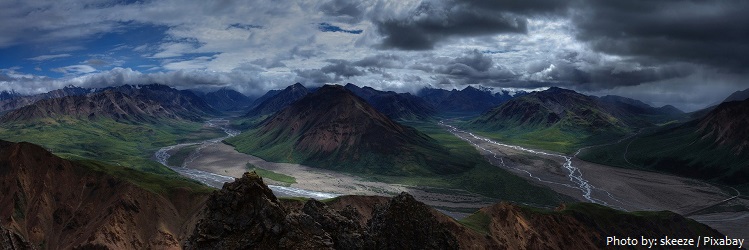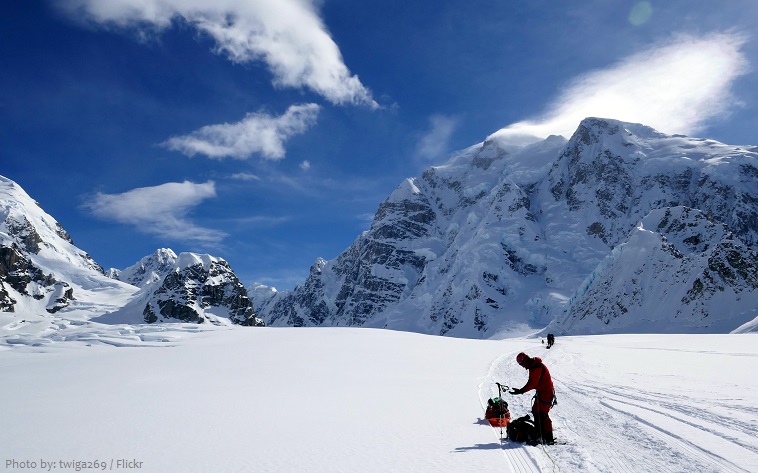The Alaska Range is a mountain range in the southcentral region of the US state of Alaska.
It is a relatively narrow, 650 kilometers (400 miles) long mountain range.
The Alaska Range stretches from the Alaska-Canada border all the way to the Alaska Peninsula.
The narrow mountain range is home to some of the world’s most dramatic topography.
It is the highest mountain range in the world outside Asia and the Andes.
The range is highest at its mid-section, a vast region of towering peaks and massive glaciers.
The highest mountain in North America, Denali at 6,190 meters (20,310 feet) above sea level, is in the Alaska Range. Denali is also the third highest of the Seven Summits (the highest peaks of the 7 continents) following Mount Everest in Nepal and Aconcagua in Argentina.
Mount Foraker, southwest of Denali, tops out at 5,304 metres (17,400 feet) and is the third highest mountain in the United States.
Several other peaks nearby exceed 4,000 metres (13,000 feet) — including Mounts Hunter, Stevens, and Silverthrone.
The spectacular mountains we see today are a result of millions of years of rock formation, uplift, and erosion.
During past ice ages, most recently about 10,000 years ago, glaciers covered the Alaska Range and much of Alaska in ice.
The Alaska Range is a continuation of the Pacific Coast Mountains extending in an arc across the northern Pacific.
The Alaska Range is part of the American Cordillera – a chain of mountain ranges (cordilleras) that consists of an almost continuous sequence of mountain ranges that form the western “backbone” of North America, South America and Central America.
The range is also part of the Pacific Ring of Fire, and the Denali Fault that runs along the southern edge of the range is responsible for a number of earthquakes.
This mountain range act as a high barrier to the flow of moist air from the Gulf of Alaska northwards, and thus has some of the harshest weather in the world. The heavy snowfall also contributes to a number of large glaciers including the Cantwell, Castner, Black Rapids, Susitna, Yanert, Muldrow, Eldridge, Ruth, Tokositna, and Kahiltna Glaciers.
Through the Alaska Range runs four major rivers, which are the Delta, Nenana, Nabesna, and Chisna Rivers. The Nenana River is a popular destination for whitewater rafting in Alaska.
The peaks present many challenges to climbers, and tourists are attracted by the enormous glaciers and dramatic Arctic scenery.
Parts of the range are protected within Wrangell-St. Elias National Park and Preserve, Denali National Park and Preserve, and Lake Clark National Park and Preserve.
The Alaska Range supports a variety of wildlife including large big-game populations of moose, Dall sheep, black bear, brown bear, wolf, caribou, and wolverine. Smaller mammals include beaver, red fox, lynx, otter, marten, squirrels, and weasel. Golden eagles, ptarmigan, ravens, and sharp-shinned hawks inhabit the uplands.
The range’s height and distance from the equator combine to make it a place of eternal winter.
The name “Alaskan Range” appears to have been first applied to these mountains in 1869 by naturalist W. H. Dall. The name eventually became “Alaska Range” through local use. In 1849 Constantin Grewingk applied the name “Tschigmit” to this mountain range. A map made by the General Land Office in 1869 calls the southwestern part of the Alaska Range the “Chigmit Mountains” and the northeastern part the “Beaver Mountains”.
